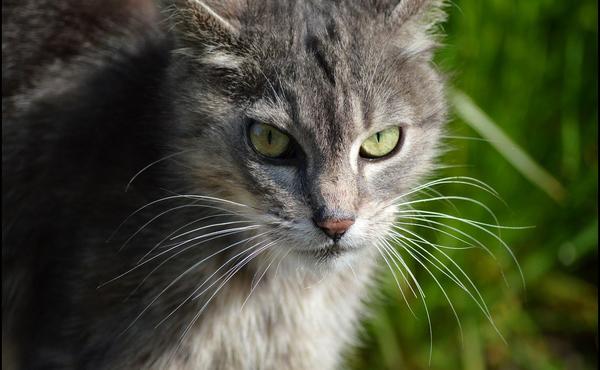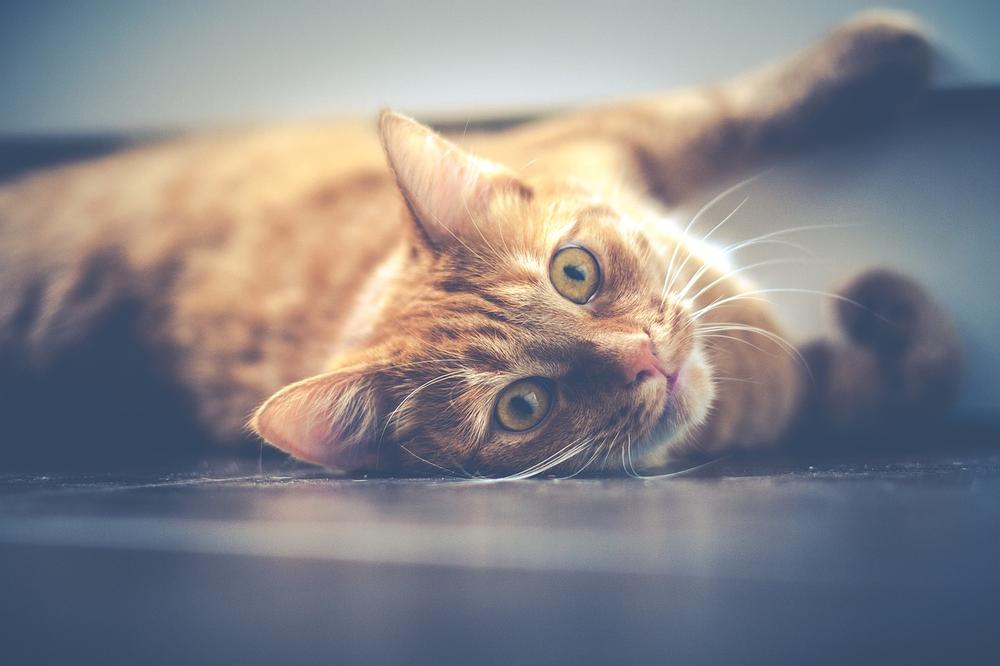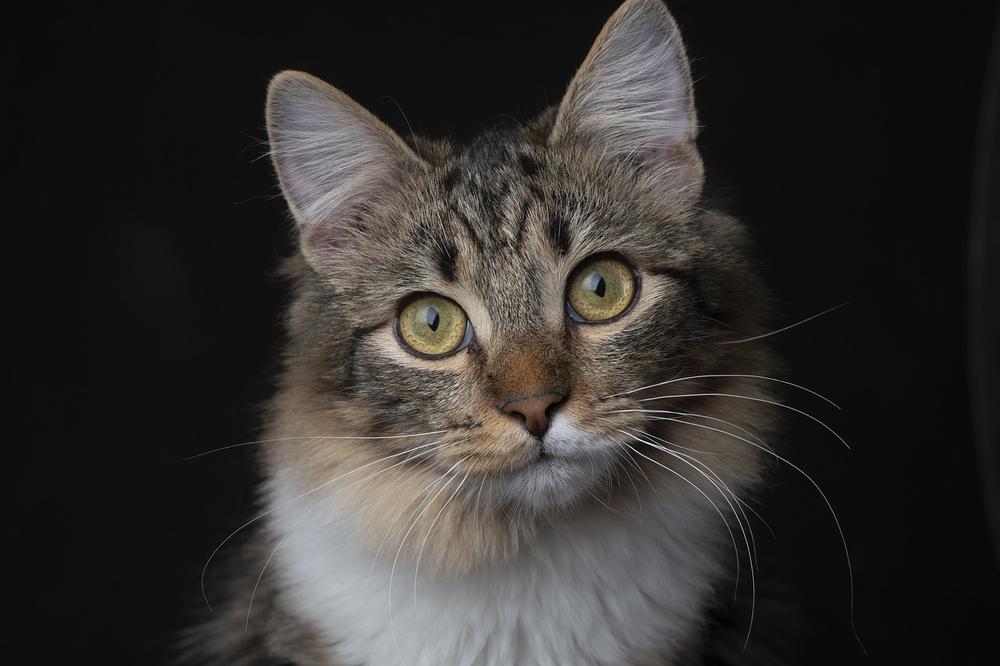Wondering Why Is Your Cat Peeing a Lot? PLEASE Read This…

Ever wondered why your cat has suddenly become an Olympic-level pee-er?
It's like they're training for the Summer Games, but instead of going for gold, they're aiming for your pristine carpet. 😱
You're probably freaking out, thinking your furball is one step away from the kitty ICU.
Well, my fellow feline fanatics, buckle up because we're about to dive into the mysterious world of cat pee.
Let's uncover the truth, shall we?
Understanding Potential Medical Issues
Increased peeing and drinking a lot in cats can mean something serious is going on.
Let's break it down:
- Hyperthyroidism happens when the thyroid gland makes too much hormone, and it's a common cause of more pee and drinks for cats.
- Diabetes insipidus is another condition that messes with how the body handles water, leading to constant thirst and frequent trips to the litter box.
- Kidney disease and diabetes mellitus are two other conditions that mess with how well the kidneys work, which can cause cats to drink and pee more.
- Watch out for signs of increased peeing, like having to clean up a lot of wet spots or finding your cat going outside the litter tray.
- If you see any of these signs, don't wait around—get your cat to the vet right away. Serious conditions like kidney disease and blockages can get worse fast if not treated.
- The vet will do a thorough check-up, some blood tests, and look at the urine to figure out what's causing all that extra peeing.
- When cats drink and pee too much, vets use the fancy term polyuria/polydipsia (PU/PD), meaning they make too much pee and feel too thirsty.
Taking care of these issues ASAP means a happier life for your kitty! 😺

And if you're worried about why your older cat is not eating but drinking, I have just the guide for you.
In my blog post Older Cat Not Eating but Drinking, you'll find all the reasons and solutions you need.
Don't wait, take care of your feline companion with my expert advice!
Monitoring Your Cat's Drinking Habits
To monitor your cat's drinking habits effectively, here are 11 steps you can take:
- Keep track of how often your cat visits the water bowl.
- Measure your cat's water intake and urine output daily.
- On average, a healthy cat drinks less than 45 ml of water per kg of body weight per day.
- A cat should urinate less than 40 ml per kg of body weight per day.
- Excessive thirst often leads to increased urination.
- Avoid restricting your cat's access to water.
- Polydipsia, excessive water consumption, is common with increased urine output. 🐱
- Normal water consumption for a cat is usually less than 60 ml/kg/day.
- Polydipsia is confirmed if a cat drinks more than 100 ml/kg/day.
- A cat drinking between 60-100 ml/kg/day may indicate a significant increase from normal water consumption.
- Measure your cat's water intake over a 24-hour period to get an accurate reading.
Ensuring the health and well-being of your cat can be achieved by overseeing and controlling their water consumption.
And now, let's move on to another crucial aspect of monitoring your cat's drinking habits.
Keep an eye out for any signs of urinary tract obstructions as they can also contribute to increased urination and excessive drinking...
Urinary Tract Obstructions and Their Symptoms
Watch for signs of urinary tract obstructions in your cat.
Look out for frequent trips to the litter box, but little urine produced. Be wary if your cat vocalizes while urinating or strains excessively. Feline lower urinary tract disease (FLUTD) can cause small, frequent urination with blood and pain.

Obstructions in the urinary tract arise from minerals or tumors, interfering with normal urination.
Increased attempts to urinate or a rise in urine volume may indicate urinary problems and possible blockages, demanding immediate veterinary intervention.
Stay alert, be attentive, and take swift action to safeguard your feline friend's health.
Impact of Infectious and Noninfectious Diseases on Excessive Urination in Cats
Cats can pee too much for different reasons, some infectious and some not.
Knowing the impact of these problems is important for you, the cat owner.
One common cause of excessive urination in cats is infections like urinary tract infections (UTIs). So, it's important for you to find out if your cat has an infection and get them treated quickly to avoid any further complications.
Increased drinking usually comes with increased peeing. This could be because of various infections like UTIs or kidney infections.
When left untreated, these infections can get worse and affect your cat's all in all health.
There's also something called Feline Lower Urinary Tract Disease (FLUTD) which can make cats pee a lot and feel pain. Keep an eye on your cat's behavior and consult a vet if you think they might have FLUTD.
Other diseases that can cause excessive urine production include psychogenic polydipsia, diabetes mellitus, renal dysfunction, primary and secondary nephrogenic diabetes insipidus, pyelonephritis, hyperthyroidism, liver disease, and hyperadrenocorticism.
If your cat is peeing excessively, it's important for you to seek veterinary advice. The right diagnosis will determine the treatment and management strategies for your cat based on their specific condition.
Knowing When to Seek Veterinary Assistance
You gotta know when to take your cat to the vet, it's important for their wellbeing. Here's what you need to please bear in mind:
- If your cat keeps peeing a lot and drinking excessively for more than a few days, don't wait around, go see a vet.
- A good vet will give your cat a thorough check-up and run some tests to figure out what's causing these symptoms.
- Catching diseases early is key to keeping your cat healthy. The sooner you know what's wrong, the better chance you have of helping them and lengthening their life.
- Don't try any DIY treatments until the vet gives a proper diagnosis. They'll tell you what to do based on your cat's specific condition.
- Now, if your cat is hardly peeing or seems to struggle to pee, get them to the vet right away! This could be super dangerous.
- Sometimes the vet might need to run more tests, like blood tests or imaging, to really get to the bottom of what's going on with your cat.
- Vets can offer various services to meet your cat's needs, from surgery and lab work to medication and even just a place to stay if they need it.
Always tell the vet about any changes in your cat's condition ASAP.

That way, they can step in quickly and give your furball the care they need.
Conclusion
Key Takeaways:
- Increased urination in cats may be signs of serious illnesses and diseases.
- Common symptoms of increased peeing include large amounts of urine and wet spots.
- Conditions such as hyperthyroidism, diabetes, and kidney disease can cause increased drinking and urination.
- Prompt treatment is essential for life-threatening conditions like kidney disease.
- Diagnosing excessive urination involves a thorough physical examination, blood tests, and urine analysis.
- Normal water consumption for a cat is usually less than 60 ml/kg/day.
- Measuring a cat's water intake can help determine if they are urinating more than normal.
- Feline lower urinary tract disease (FLUTD) requires immediate veterinary help.
- Increased drinking and urination can be caused by infectious diseases like UTIs or kidney infections.
- Veterinary assistance should be sought if you notice increased urination and drinking in your cat.
And that wraps up today's article.
If you wish to read more of my useful articles, I recommend you check out some of these: How Long Can Cats Hold Their Poop, Why Does Your Cat Have a White Nose, Can Cats Drink Beer, Cat Not Eating After Spay, and How Long Does It Take for a Cat to Die if It Stops Eating
Talk soon,
-Sarah Davis